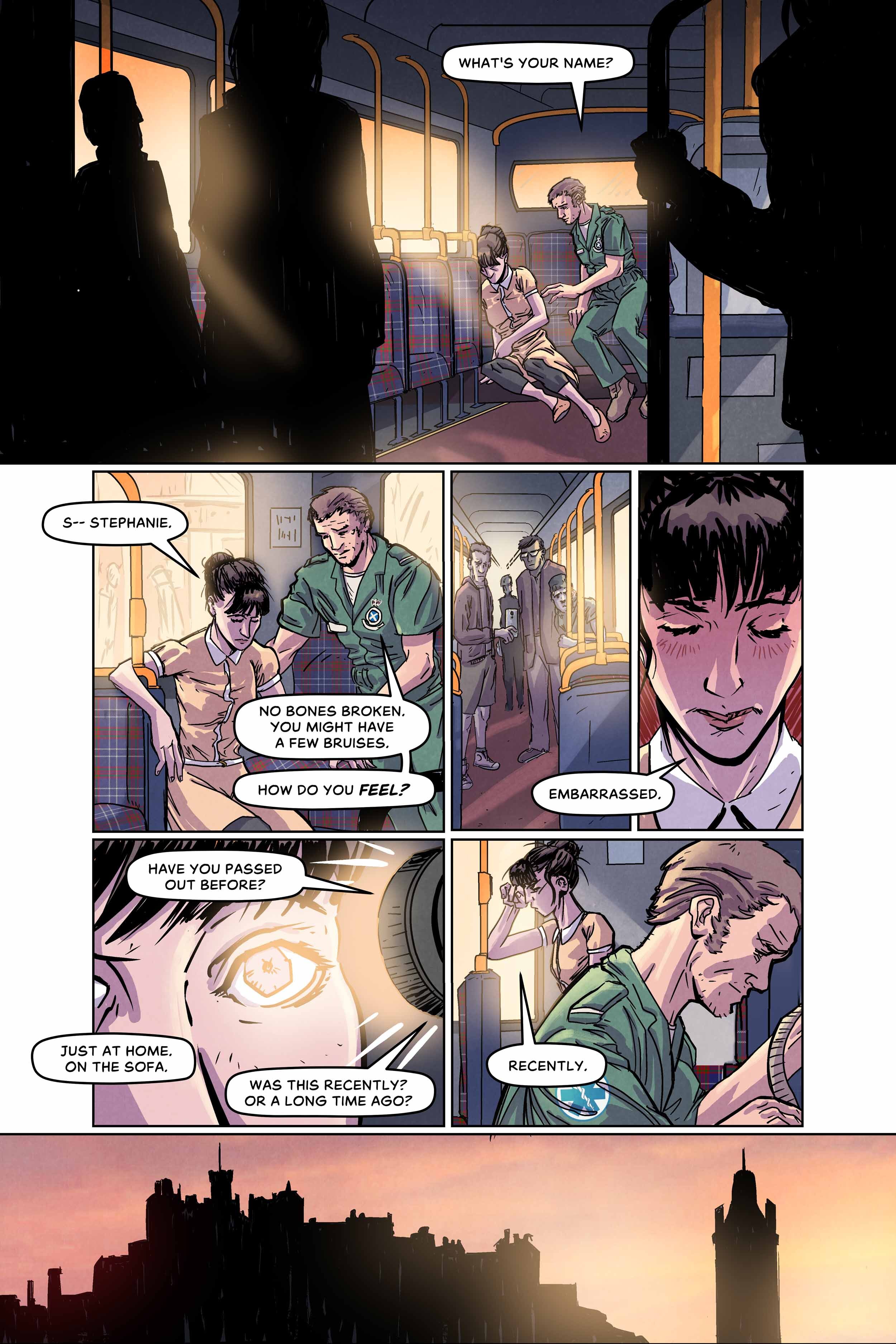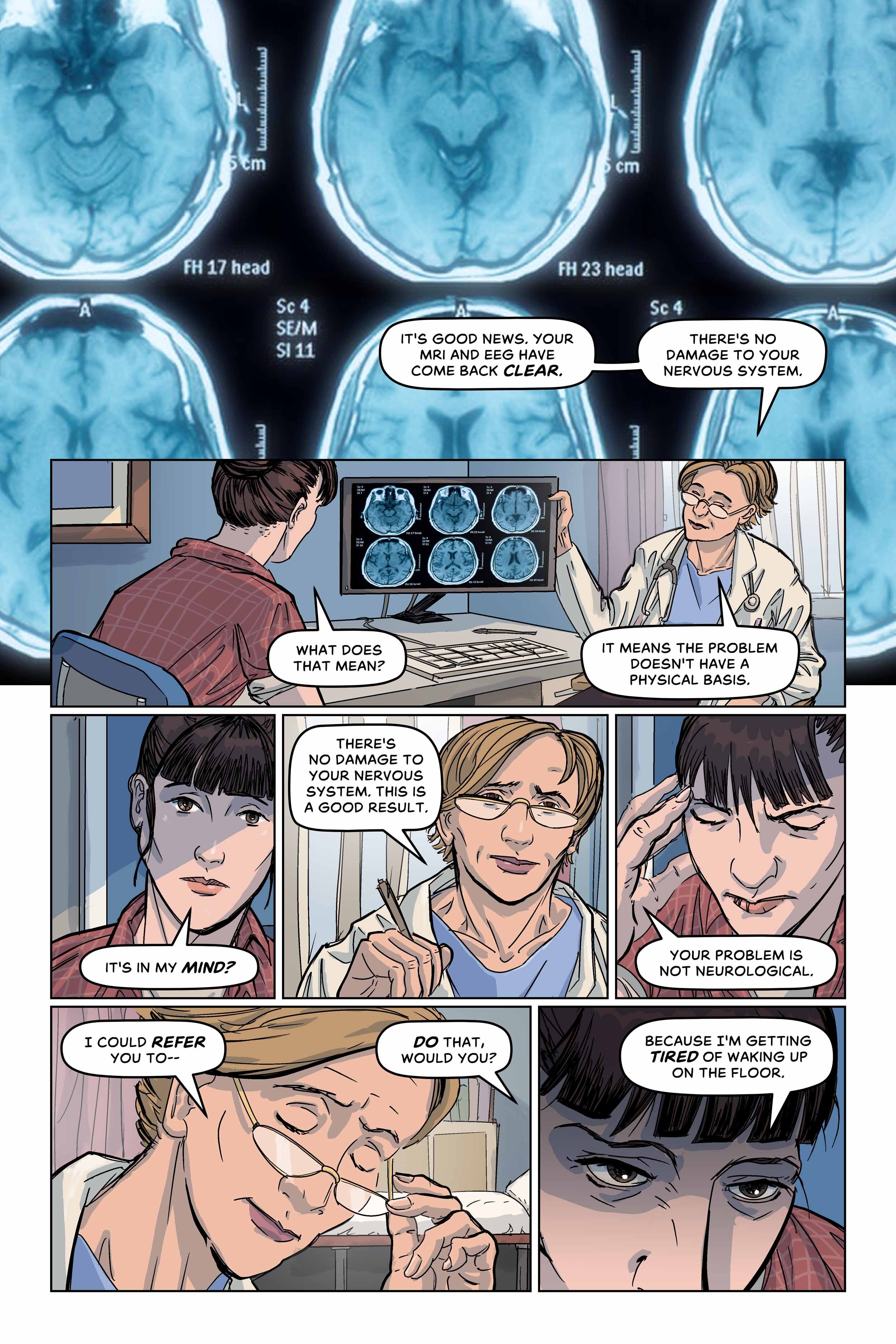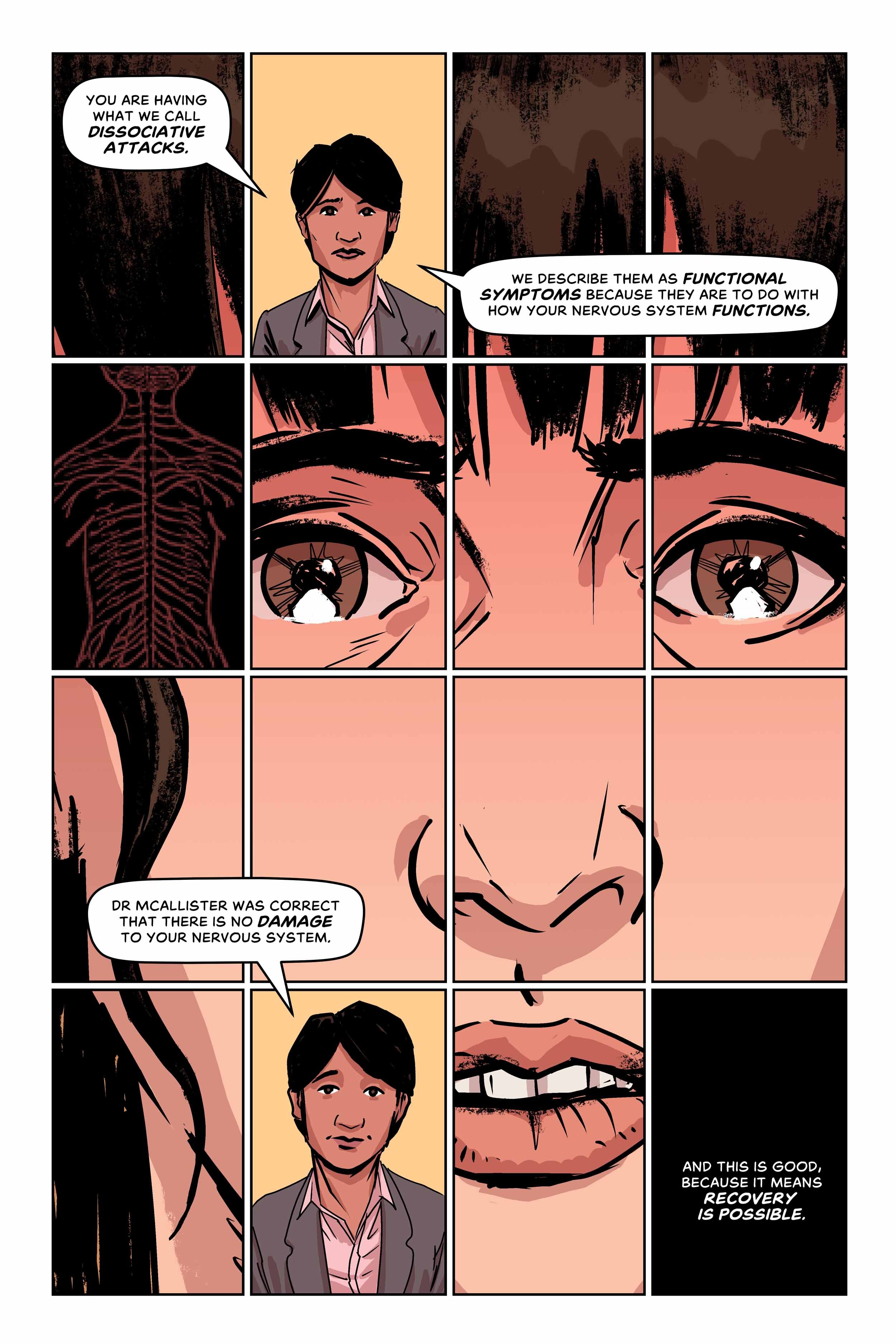Beyond Walls Fellowships: Gavin Inglis
The Creative Research Artist Fellowships were created as part of the Beyond Walls programme of Art and Therapeutic Design at the new Royal Hospital for Children and Young People, Edinburgh. With the Fellowships, each artist approached what was a very open brief regarding involvement with DCN very differently.
Gavin was the Language and Cognition Fellow and is a writer with a background in Computer Science, Artificial Intelligence and Interactive Narratives.
He explained how he used his previous experience to explore the possibilities offered by the Fellowship. “The brief was to ‘mark the transition’ and do something constructive for patients and the building. I knew I wanted to do a lot of engagement, amongst other things there was a neuroscience evening at the Edinburgh International Book Festival.
“I had a new piece of interactive fiction for the festival where someone was strapped up to an EEG [An electroencephalogram]. EEG is a test used to find problems related to electrical activity of the brain. An EEG tracks and records brain wave patterns. Small metal discs with thin wires (electrodes) are placed on the scalp, and then send signals to a computer to record the results. The twist was that the EEG was making the decisions. I think it was probably the first time at the Book Festival where they had brains being ‘read’ live on stage!
“For the cognition side of it, I built a piece of Artificial Intelligence that digested the work of particular authors and wrote new pieces in their style. It’s kind of spooky how neural nets can do that these days. I had audience members reading pieces supposedly by Jane Austen, Conan Doyle, and HP Lovecraft.
“I went to a lot of meetings at the hospital and talked to lots of staff. I was fairly open-minded about what I was going to do. I spoke to someone who mentioned the field of Functional Neurological Disorders (FND) and suggested it might be something I would be interested in. Everyone who works in this field knows about Professor of Neurology Jon Stone, who has spent the last twenty years researching Functional Neurological Disorders. When I approached him with my idea of a graphic novel about FND he was very helpful and approachable.
“I wanted to do something therapeutic and something that would last longer than the Fellowship. My understanding of FND is that some of the suffering that patients go through is about not understanding what is wrong with them. The body doesn’t seem to be working properly and they don’t know why, often they go to a GP who doesn’t know what it is and they get passed around from place to place. FNDs can have a terrible effect on their life. If you can’t go to work and your doctor can’t tell you what’s wrong with you, the suffering just increases. As part of my research I went to a conference at the Assembly Rooms about FND. The space holds about 800 people and it was almost full, so fortunately awareness is growing.”
Professor Stone says that FND is the “second most common reason someone sees a neurologist. The peak age for onset is eighteen, although it can occur at any age.” FND is when someone has neurological symptoms, such as limb weakness, numbness, fits or blackouts. These are due to a problem with the functioning of the nervous system rather than because of damage or a structural disease of the nervous system. You can’t see FND on a scan but it is real, and not imaginary.”
He goes onto to explain, “It’s a very hidden, stigmatised disorder, although people are changing their attitudes and behaviours and developing better treatment, which might include physiotherapy or psychological therapy. The condition is at the interface between neurology and psychiatry. It’s a disorder of the nervous system functioning where psychological factors can be very important but might not be. The patient ends up in neurology because the symptoms appear to be epilepsy or a stroke. It was the case in the past that patients might be told there was nothing wrong with them. In Gavin’s graphic novel a character presenting with a type of FND called a dissociative seizure to the ambulance services is questioned by the paramedic. We now diagnose FND using the positive features of the episode. So, for example, the character in Gavin’s work has her eyes closed when having a dissociative seizure whereas with an epileptic fit their eyes would be open. With FND related leg weakness, if the patient is distracted, they can move their leg better, something we share with them to improve understanding and treatment. For someone with a seizure this would probably be through psychological therapy and for FND mobility problems the first port of call would usually be physiotherapy.
“I made a website for patients with FND called www.neurosymptoms.org which Gavin used as part of his research. [There are also two patient-led websites: www.fndaction.org.uk and www.fndhope.org.uk.] Gavin’s graphic novel is an accessible format to help people get their head round a difficult topic. It can take a long time to understand it and having someone’s battles and frustrations with their FND is appealing. Hopefully patients with FND will identify with it and not feel alone. We have to normalize this condition and use multiple methods and help people understand it.”
Gavin agrees. “I wanted to create the graphic novel because it’s easily accessible with a mixture of text and striking images. The images are produced by the very talented artist Fin Cramb. I write the text and do the lettering. I very much hope it will also raise awareness and be therapeutic because it will allow people to gain some understanding of what they have and the challenges they face. It will initially be available online but the plan is to produce it as a physical thing.
“As an art form, it’s something that takes a lot of time to get right. For example, we went into DCN and saw an MRI because one of my characters has a scan. The central character has dissociative attacks but there are so many different symptoms of FND. I really needed Professor Stone’s guidance and expertise as well as the website www.neurosymptoms.org he runs. He always puts the needs of the patient first and I hope, with his help, I’ve produced something that does that too.”






